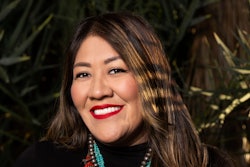Six-year postsecondary completion rates have stalled, according to the latest Completing College report from the National Student Clearinghouse Research Center, which collects and analyzes data from 97% of postsecondary institutions in the U.S.
The report found that 62.3% of those who began their first year of college in 2016 reached graduation within six years, a .1 percentage point increase from the previous year. Students who began in 2016 and finished in four years were likely unaffected by the pandemic, said Dr. Doug Shapiro, vice president of research at the National Student Clearinghouse. Later finishers, he added, may have been further along in their studies, which perhaps kept the pandemic’s negative impact to a minimum.
 Dr. Frank Fernandez, assistant professor of higher education leadership and policy at the University of Florida.
Dr. Frank Fernandez, assistant professor of higher education leadership and policy at the University of Florida.
The stall was consistent across most of the country, with only five states seeing their completion rates rise by one percentage point or higher. Completion rose across institutions for Asian and Native American students but fell for Black and Latinx students at four-year public and private nonprofit institutions. More women completed than men, bringing the completion gap to 7.1 percentage points, the largest gap since 2008.
Scholars agree that institutions should use this data as a starting point to ask themselves the important questions about how many of their students are completing and what they need to do to help everyone cross the finish line.
“The [completion] goal should be 100%,” said Dr. Travis C. Smith, assistant professor of higher education and student affairs at Auburn University in Alabama. “If 62.3% are completing, we’re losing four out of ten students — that’s not good. Who are those people, how do they identify, and what are those barriers in place hindering their matriculation?”
Some of the decline in Black and Latinx completion can be attributed to a change in institutional classification in the Integrated Postsecondary Education Data System (IPEDS). IPEDS classifies any institution that offers a bachelor’s degree as a four-year institution, even if the school identifies as a community college.





















